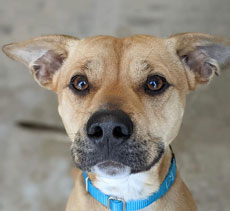You’ve just gotten your new pup and are excited to start your lives together! Now for the first and maybe most important task; naming them. This should be a fun activity shared by the family, but there are a few things that you should consider when doing so!
The best dog names are those that are one to two syllables. Not only are they easier to say, but also trouble-free for your dog to comprehend. We are not saying that you have to say no when your kid wants to name your newest addition Lord Voldemort. But, it will be in your best interest to find a shorter nickname that you use with your pup. In the example of Lord Voldemort, you could shorten the name to Volde when talking to the dog. This name is much simpler and will still give your kid the feeling like they were a big part of picking the dog's name.
You also will need to steer clear of any names that sound similar to the name of one of your household members or frequent guests, as this can be very confusing for your pup! We once had a client with a young boy named Ben and a puppy named Benji. They both got into a fair amount of mischief at a young age, and it was sometimes tough to tell which one was in trouble! However, if you do choose to go this route, the dog will certainly learn. Just know that you will have to provide them some extra time to figure it out!
The last thing to keep in mind is that your pup will live a long time! So, steer clear of anything that may not age well. We have run across a few dogs over the years that were named when the owners were in their early twenties and then regretted the name later on when they were married with kids and in a different phase of their life!
Another common topic with naming your furry friend revolves around renaming a recuse. Some people will say that you should not rename a dog, and others will tell you that it is no big deal. But, there are a few things to keep in mind here! First, the dog may have had its name before being put up for adoption or came into a shelter situation with no name. If the dog has only had the name for a short period, there is a decent chance that they don’t know their current name. It is a good idea to try and ask for details or try and see if the dog responds to their current name before you go about changing it.
There are options that can make the situation smoother! For instance, you could use a solution similar to the one we discussed with short names. We once had a client that adopted a dog named Godzilla, and they did not like it at all, so they went with Zilla. This got them the shorter name and the dog was already familiar with hearing and responding to it. If you decide to change your dog’s name, once again just be patient as they learn to respond to it. Training and teaching obedience commands with the new name is a great way to get them used to it in a hurry!
At the end of the day naming your new addition should be a fun way to welcome them to your family! But, do try to keep these simple things in mind while doing so, and your dog will have a name that they love for their entire life!



 WSHS can accept credit-card donations online using a secure server. Click on the Donate Now button. You can choose how your donation will be used! All donations are tax deductible.
WSHS can accept credit-card donations online using a secure server. Click on the Donate Now button. You can choose how your donation will be used! All donations are tax deductible.